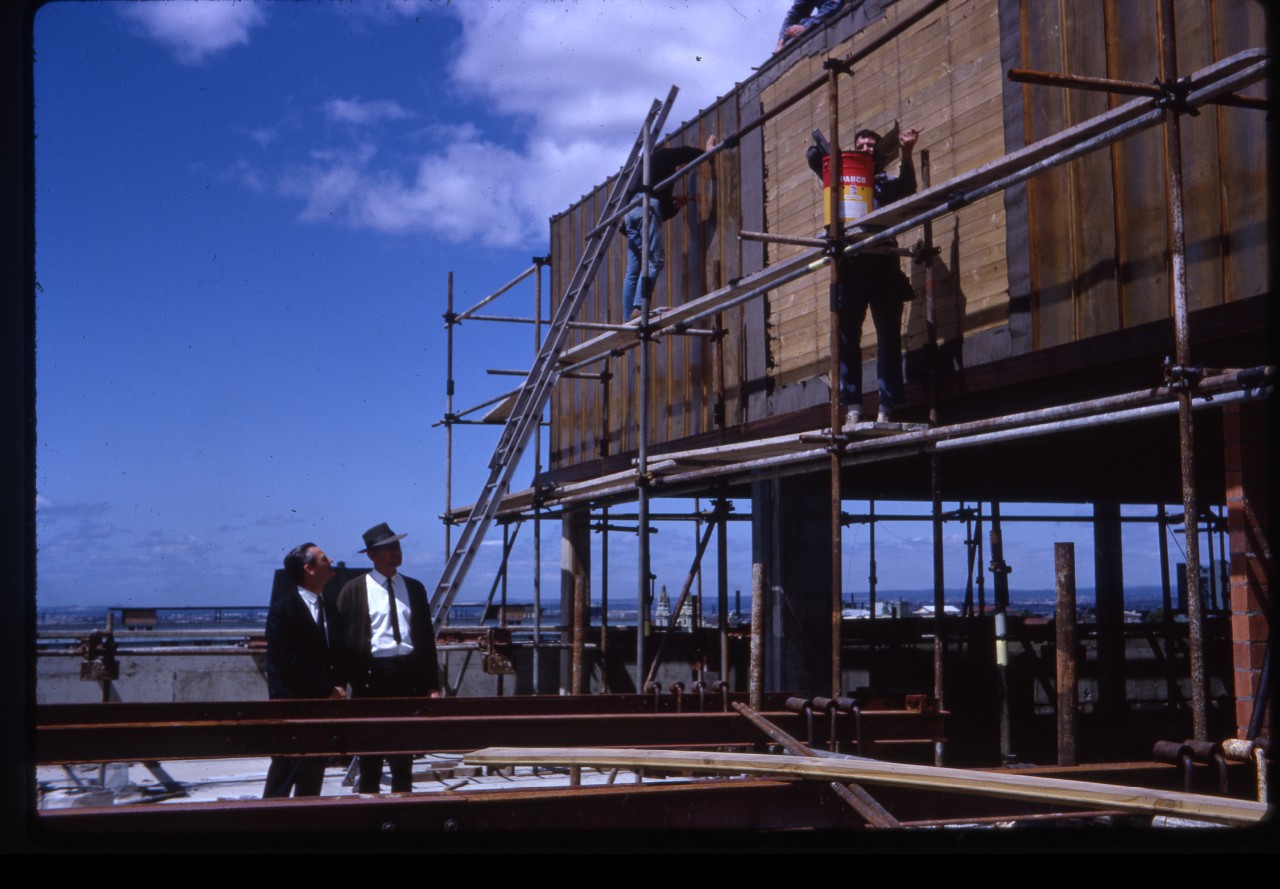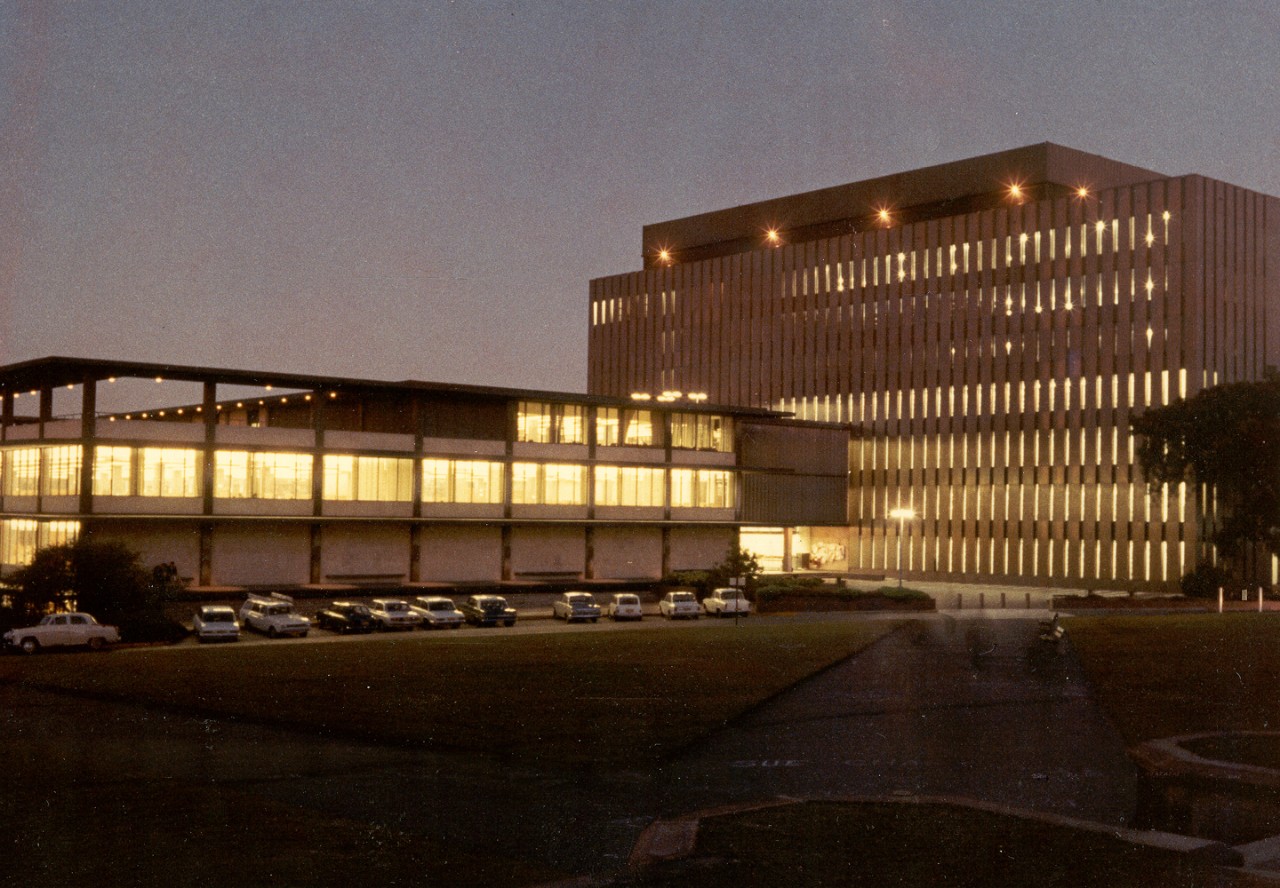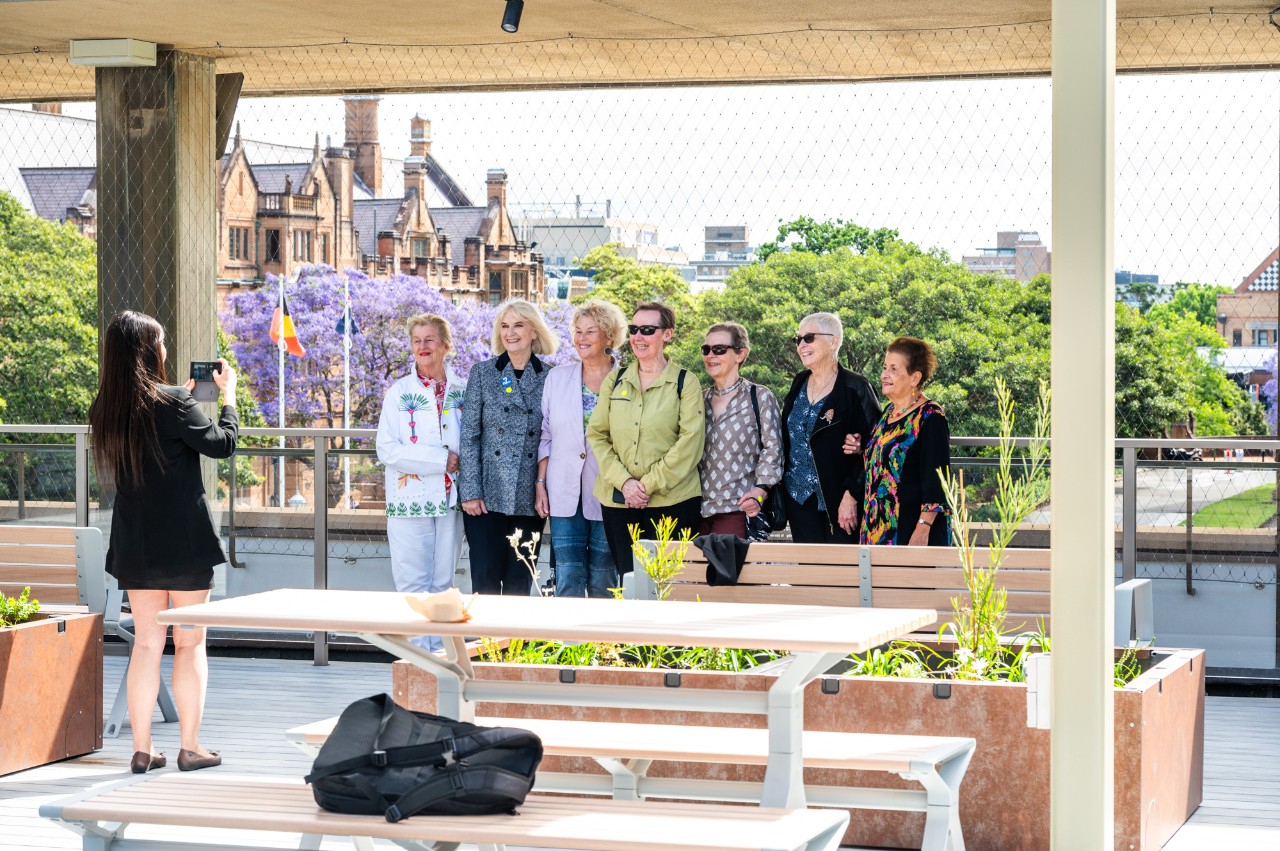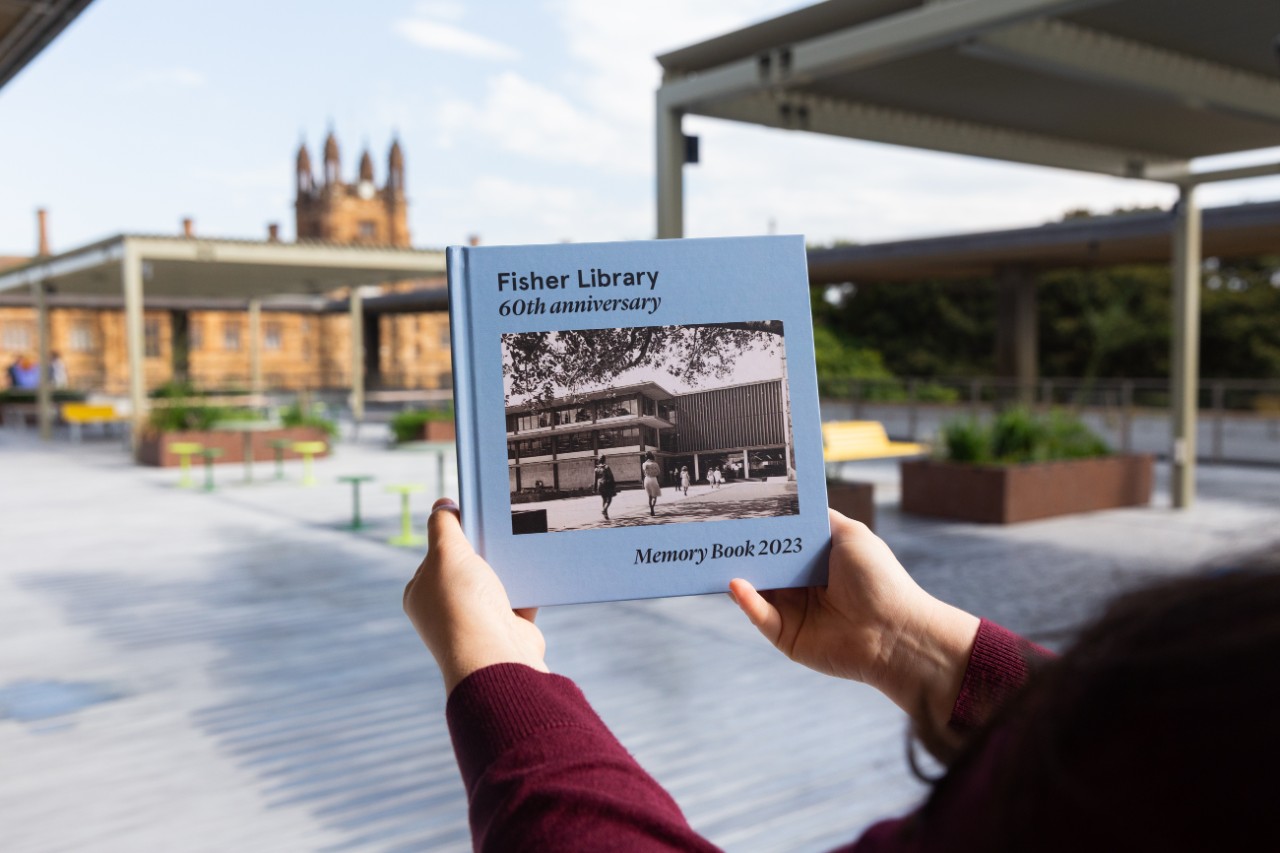Celebrating 60 Years of Fisher Library

The history of the Library is interwoven with the University of Sydney’s identity, scholarly pursuits and community. In 2023, we celebrated the 60th anniversary of the much-beloved Fisher Library.
Since its opening in 1963, Fisher has been the go-to space for students and academics to study, research and gather. In addition to scholarly endeavours, Fisher is the meeting place for protests and rallies, as well as love and friendship.
A lot has changed since the 1960s – the telephone booths and music listening area are no longer in use, for example – but spending time in Fisher has remained a quintessential part of the University experience ever since.

Who was Thomas Fisher?
Born in Sydney in 1820, Thomas Fisher was the son of former convicts John Fisher and Jemima Bolton, who met whilst serving as assigned convicts in Parramatta. Upon his parents’ passing in 1832, Fisher was cared for by a friend of his father’s who was a bootmaker. By the age of 21, he had left school, become a bootmaking apprentice, and set up his own business – T. Fisher. Ladies’ and Gentlemen’s Boot and Show Manufacturer – in Pitt St.
Fisher never married and went on to invest profits from his businesses in property. Living close by to the University of Sydney in Darlington, Fisher was known to walk through the University grounds and talk to staff and students.
Upon his passing in 1884, the University received £32,000 (equivalent of more than $3.5 million today) left in Fisher’s will for: “establishing and maintaining a Library for use of the said University for which purpose they may erect a building and may purchase books and do anything which may be thought desirable for effectuating the objects aforesaid.”
This generous bequest makes Fisher the largest benefactor of the Library to date.

The original Fisher Library (now MacLaurin Hall)
By the time Fisher’s bequest was received, the need for a dedicated Library space was greatly apparent. Construction on this original Fisher Library commenced in January 1902 and took nearly eight years to complete.
The building’s architecture was created to complement the neighbouring Great Hall, which has been designed by Edmund Thomas Blacket, the official Colonial Architect to NSW from 1849 to 1854. Features include an awe- inspiring cedar roof, an ornate gothic stone facade, and seven-storey fireproof steel and glass bookstack. When Fisher Library opened in 1909, the Daily Telegraph proclaimed it to be: “the finest piece of Gothic architecture in Australasia worthy of any institution in the world”.
At the time of its build, the original Fisher Library could seat 250 readers, about one-fifth of enrolled students at the time. It was thought that the building would be sufficient for many years to come. However, this was not the case.


The need for a new Library building
Despite the sizeable investment and build of the first Fisher Library (now MacLaurin Hall), the demand for the Library outgrew the space by the 1950s. Following the post-WWII economic boom, and coinciding with the Menzies era, there was a palpable demand for education.
An unprecedented number of students – particularly ex-servicemen – enrolled at the University, and soon the Library was bursting at the seams. Undergraduate books were in short supply, the reading room was crowded and noisy, and staff were overwhelmed.
By 1954, the University’s Senate recommended that the construction of a new Library be prioritised. They estimated a cost of £1,000,000, which they submitted in 1956 to the government’s Sir Keith Murry’s Committee of Enquiry into the Future of Australian Universities. It was agreed that the cost was to be covered by the Federal and NSW Governments in equal share.
The University Librarian from 1959 to 1962, Dr Andrew Osborn, campaigned vigorously to transform the Library. Although born in Australia, Osborn had spent most of his professional life at the Harvard University Library, the largest university library in the world. Osborn’s vision for a new Library building reflected his knowledge of modern library design in the United States.
This was a radical departure from the gothic and ornate identity of the original Fisher Library. Whilst the new building contributed significantly to Osborn’s vision of a contemporary research library, he was disheartened by the University’s ongoing operational funding. He resigned before the building was completed to pursue another passion – education for librarianship.
All images below: Construction of Fisher Library, Rare Books and Special Collections, 378.994S M.Li 302.





- Two first year arts students, Patricia Finlay and Anne Bevis, stand out the front of the Fisher Library stage 2 construction sign, October 1965. Rare Books and Special Collections, 378.994S M.Li 302.
A revolutionary new Fisher Library (our current building)
The new Fisher Library was designed by joint architects Ken Woolley (NSW Government Architect Office) and Tom O’Mahoney (O’Mahoney, Neville and Morgan), and was one of the most significant and successful public architectural projects in Sydney in the 1960s.
After a period of planning and design in 1958-59 the work on Stage 1 commenced. This first stage encompassed the horizontal five-storey undergraduate wing, which was competed at the end of 1962 and officially opened on 6 September 1963. The second stage, which encompassed the vertical nine-storey stack was completed between 1964-1966.
As gothic and ornate as the original Fisher Library had been, the new building is markedly mid-century modern. The building features open floor plans and minimal ornamentation, with large surfaces of pre-oxidised extruded bronze (as featured across the exterior of the Library stack) and sandstone (sourced for its colour from Piles Creek Quarry). At the time of its construction, it boasted interior advancements such as rubber floor tiles and the largest reverse-cycle air-conditioning plant in Australia.

The new Fisher Library also featured specialist spaces for a new age, such as lounges, photocopiers, and the highly popular music listening area. Located on level 4, students could use headphones to listen to any of several thousand LP records. The roof terrace was also a popular space for students to relax and, after a successful student-led campaign in 2022, it re-opened in late 2023.
The new Fisher Library revolutionised the academic and student experience, bringing education out of the gothic and traditional space of MacLaurin Hall and into the post-war modern world. The building won both the RAIA Sulman Award and the RIBA Bronze Medal in 1962, making it the only University building to win such prestigious awards to date. The building also went on to be heritage listed in 2008.

The future of the Library
In 2023, Fisher Library alone received 5,802 average daily visitors. The Library has also expanded to 13 sites across Camperdown campus, the Conservatorium of Music and Camden Commons. The Library facilitates not only academic research but also has dedicated TechSpaces for ideation and creation with 3D printers, CNC router and workshops on topics such as generative AI.
The Library’s collections have also expanded online, including Digital Collections and the Sydney eScholarship Repository (which had over 1.5 million downloads in 2023). Continuing in the direction set by the new Fisher Library of enriching student life, the Library now has dedicated Peer Learning Advisors and runs year-round events including Welcome Week and Exam Ready programs.






60th anniversary celebrations
To mark this occassion, the Library hosted a range of activities. On 2 November 2023, a student celebration was held in the forecourt of Fisher Library with celebratory cupcakes, gelato and a photobooth. A photographic exhibition of long-unseen photographs from the Rare Books and Special Collections, as well as the University's Archives, was installed in three locations across the building.
On 6 November 2023, a full day of festivities was held to celebrate the occassion with the wider community. This included printmaking on the Piscator Press, a panel talk on the history of the Library, a preview of the newly completed roof terrace, and a cocktail reception.
To celebrate this milestone occasion, the Library also acquired a first edition copy of a rare book that is considered by scholars to be one of the most influential works in the history of western medicine, De humani corporis fabrica libri septem (On the Fabric of the Human Body in seven books) by Andreas Vesalius. The book has been digitised and is available to view through the Library’s Digital Collections.
Fisher Library Memory Book
To commemorate this anniversary, memories and photos submitted by alumni, students and staff have been collated into a Memory Book. These have now been compiled into a Memory Book, available to browse online through our Digital Collections and in person at Rare Books and Special Collections.
